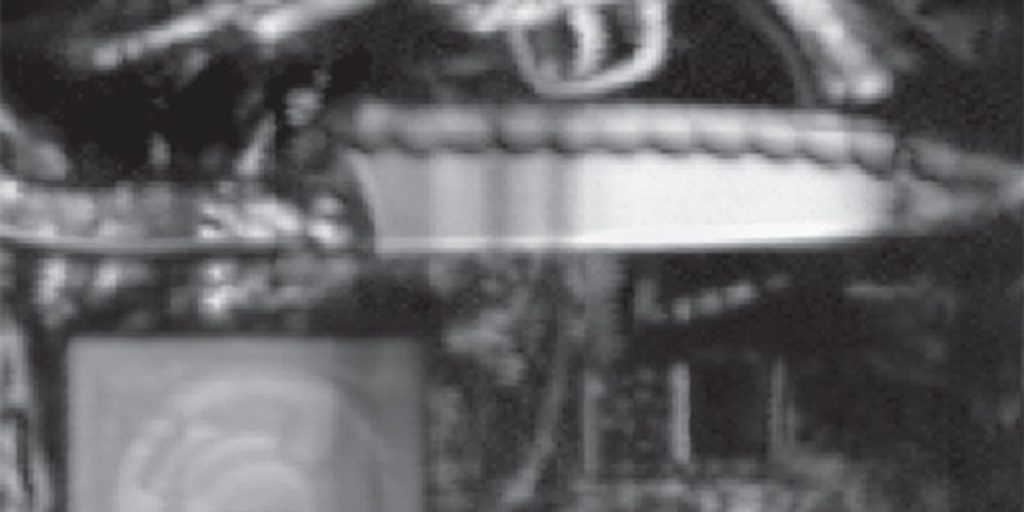Instead of obtaining the image itself, an interferometric imager derives a picture’s spatial Fourier transform from a measure of the electric field when a terahertz wave reaches a pair of detectors. Then a computer reverses the transformation to give the real image. In an interferometric imager, spatial frequencies are represented by the distance between two detectors on an array [see illustration, “T-Ray Scanner”]. The imager takes advantage of the fact that when you increase the number of detectors, the number of spatial frequencies you can measure increases by a greater amount. For example, imagine three detectors spaced unevenly along a line. There are three different distances between pairs of detectors—1 to 2, 2 to 3, and 1 to 3—and thus three spatial frequencies. Now, add a fourth detector farther out on the line. The pairs are now 1 to 2, 2 to 3, 3 to 4, 1 to 3, 1 to 4, and 2 to 4, or six spatial frequencies. In general, for n detectors, the number of spatial frequencies is n(n–1)/2.

Illustration: Bryan Christie Design
TeraherTz and the spectral fingerprint
The Fourier image is acquired almost instantly, and the main limit on the camera’s speed is the time it takes the computer to digitize the data from the detectors and perform the needed calculations. The resolution of a reverse-transformed image comes from the number and arrangement of spatial frequencies represented in the transform. Imagine trying to represent the picture of the football referee in a Fourier transform, restricting yourself only to the jersey’s frequency and one or two others. When you reverse the transformation you might be able to make out the bars in the jersey, but the rest of the picture would be a blur. But a transform having dozens, or—better yet—hundreds of spatial frequencies represented would reconstruct the picture reasonably well.
One of the imagers we’re developing is made up of 12 detectors arranged in a spiral pattern on a 1-meter disk; it can measure 66 spatial frequencies. The imager is good enough to resolve a 2.5-centimeter square of RDX plastic explosive at 50 meters.
Powerful as terahertz imaging is, no imaging or detection technology can reliably find every threat to security. Each technology has its own strengths and weaknesses. But when several are used as part of a sensor suite, their collective strengths are integrated. As an example, consider how you would screen trucks at a port or other checkpoint. There are detection systems for monitoring nuclear radiation, and X-ray systems could penetrate through the truck’s metal walls to probe the contents inside. But how would the driver himself be screened? The driver may be carrying concealed weapons, a bomb, a trigger mechanism for a weapon hidden in the truck, or other threats that would be overlooked if only the vehicle were screened. You can’t X-ray the driver, but you can subject him to a suite of safer imagers including a T-ray imager.
That said, security screening is a more challenging application than it might seem at first. It has to work in real-world conditions, has to be small enough to fit in already crowded spaces such as an airport security checkpoint, and has to have a very low rate of false alarms. Otherwise it would become a bottleneck in the flow of people or goods.
T-ray imagers are close to meeting all those requirements for short-range scanners, as long as the additional feature of spectroscopy is excluded. That feature may take a few more years of work, requiring smaller, brighter T-ray sources and more sensitive detectors.
As for imagers that can see a suspicious object in your shopping bag from 50 meters, those are more like five years away at our current rate of progress. Adding the ability to tell whether that object is a taco or some TNT is an additional five years away, at least. And getting them small enough to wear like spectacles? We won’t even hazard a guess. So if you see them advertised in a comic book, trust us: they’re fake.
About the Authors
John F. Federici and Dale Gary are professors of physics at New Jersey Institute of Technology, in Newark. Robert Barat is a professor of chemical engineering and Zoi-Heleni Michalopoulu is a professor of mathematics, also at NJIT.
To Probe Further
The U.S. National Research Council commissioned a report on the use of millimeter-wave and terahertz technologies in security. See Assessment of Millimeter-Wave and Terahertz Technology for Detection and Identification of Concealed Explosives and Weapons (National Academies Press, 2007).


